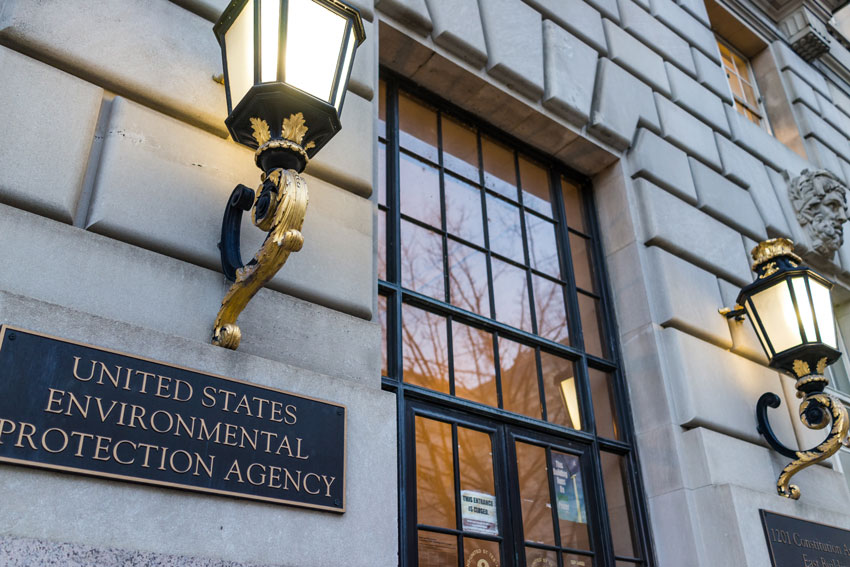Sustainability and the Textile Industry
Learning Objectives:
- Explain the concept of sustainability.
- Explain how sustainability impacts the builder, architect, manufacturer, and occupant.
- Discuss how thoughtful design and material specification can promote sustainability.
- List how textiles specification can be an important part of creating a sustainable project.
Credits:
This course is approved as a Structured Course
This course can be self-reported to the AANB, as per their CE Guidelines
Approved for structured learning
Approved for Core Learning
This course can be self-reported to the NLAA
Course may qualify for Learning Hours with NWTAA
Course eligible for OAA Learning Hours
This course is approved as a core course
This course can be self-reported for Learning Units to the Architectural Institute of British Columbia
What is Sustainability?
Sustainability—chances are good that most of us use this term in reference to work practices without being able to confidently define it. We know that just about every sector now strives for sustainable practices, and that the building industry in particular aims for sustainable designs constructed with sustainable materials. But what do we actually mean when we talk about sustainability? And how do we know that we’re all talking about the same thing?

All photos courtesy of Bentley Mills
Sustainability and the philosophy that drives it is intended to preserve our natural resources and create an environment that can be healthful and productive for generations to come.
One of the reasons this is such a difficult task is that the term “sustainability” is often defined and used in many different ways, depending on its intended use. For example, one frequently quoted definition is from the Brundtland Report (also known as Our Common Future): “Sustainable development is development that meets the needs of the present without compromising the ability of future generations to meet their own needs.”1 When defined in relation to agriculture, sustainability often refers to the ability of a farm to flourish economically while treating its workers fairly, and by ensuring the health of the environment. You’ll find similar definitions for manufacturing and business practices in a growing list of sectors. For the purpose of this course, however, we’re going to stick to a basic definition as provided by the U.S. Environmental Protection Agency (EPA):

Manufacturing options have opened up many new opportunities for the architect to specify projects in a more sustainable fashion.
“Sustainability is based on a simple principle: Everything we need for our survival and well-being depends, either directly or indirectly, on our natural environment. To pursue sustainability is to create and maintain the conditions under which humans and nature can exist in productive harmony to support present and future generations.”2
In the context of architecture, design, and construction, much of this definition applies to materials and product selection, but it also concerns building practices and the eventual occupant experience. Projects that are constructed with sustainable materials and finished with products from companies known for their sustainable business practices carry a significant weight in everything from LEED certification to tax credits. And sustainably designed and constructed buildings can help occupants reduce energy and water use, all while providing a healthy indoor environment.
A Brief History of Sustainability
A brief history of sustainability is useful to help show how and why certain regulations and practices are now in place, and why sustainable building practices are so important. In the United States, the environmental movement was sparked in reaction to four main things: increased industrialization, population growth, pollution, and exploited natural resources. That is, evidence of unsustainable growth.
After World War II, many government projects were initiated to spur economic development, and while they did that, many also had unintended consequences on the environment. In the 1950s, for example, the government sponsored projects that helped create the infrastructure in the United States, such as dams used to generate energy, systems to control flooding, and new highways to connect cities and in turn set the stage for car culture. While all of these advances helped the country grow, many of them negatively impacted the environment and in turn human health; unfortunately, those impacts would take decades to be fully understood.3
People could physically see the impact of this rapid growth, both through pollution and through the destruction of the natural environment—and they could see this for decades. It took a while, but eventually scientists began to piece together the more invisible side effects of industrialization and pollution, namely the impact on human health and the environment.
In 1962, Rachel Carson published Silent Spring; her book outlined the potential cumulative health impacts of pesticide use not only in wildlife but also in humans. Silent Spring helped the general public become more aware that the pollution was causing people to become sick, whether through poor air quality or by recreational activities such as swimming in polluted rivers, or eating fish from lakes and rivers that were contaminated with industrial pollutants.
While the United States government had some basic environmental laws in place during the 1950s and 1960s to address air and water quality, it wasn’t until 1970 that the EPA was created. This new government agency combined in one place federal research and monitoring, and sought to establish new standards that could be enforced by law to protect the environment and create a healthier environment for Americans. Newly overhauled laws required permits and set limits for industries to help control air and water pollution and to improve the quality of both. The laws also addressed issues of solid and hazardous waste disposal as a way to limit human exposure to the waste. In many cases, the federal government set the standards, but the states were required to implement and enforce them.3

The United State Environmental Protection Agency (EPA) was created as a place for federal research and monitoring, and sought to establish new standards that could be enforced by law to protect the environment and create a healthier environment for Americans.
The changes that were set in motion by the EPA are only one part of the sustainability equation. Another aspect began after the end of World War II, with international agreements revolving around peace and security as human rights. These concepts concerned both economic and social development, and aimed to help ensure that with economic growth, humans still experienced a good quality of life, and that living standards would improve not only in the United States but worldwide. These concepts helped inform later developments that integrated conservation and development with the 1980 World Conservation Strategy: Living Resources Conservation for Sustainable Development, published by the International Union for Conservation of Nature (IUCN).
In short, these movements all set in motion a system of setting measurable goals for sustainable development, and for attempting to manage how humans use natural resources in a way that addresses the needs of both present and future generations. Since 1980, there have been many different national and international efforts to encourage—and in some cases mandate—sustainability and sustainable development. As far as the United States is concerned, the focus has been on environmental, economic, and human health issues. And, while many advances have been made over the decades, there is much more that the United States can still do to advance sustainability practices.
In the context of architecture, design, and the building industries, sustainability focuses on the impact decisions have on people, materials, and construction practices, and on the buildings themselves. Before we dig into that, though, let’s look at something completely different to highlight how deliberate, thoughtful changes in environmental regulation and product design can gradually improve different and related aspects of society and the quality of human life.
Changes in the Automotive Industry
The automotive industry provides an excellent example of how technology can result in unintended consequences that affect society, the environment, and economics. More importantly, however, this example shows how thoughtful changes and focused government regulations can aim to turn those unintended consequences around. The two main areas where the automotive industry shifted its practices are in fuel consumption and vehicle design.
From the 1950s to 1970s, fuel standards and consumption changed quite a bit. During the 1950s and 1960s, cars became a fixed part of the American culture. With the rise of suburbia and the national highway system in the 1950s, car ownership increased, and as a consequence, urban public transit systems decreased. So, there were more cars on the road, and people were driving more often and longer distances both for work and leisure activities.
The impact of the increased number of cars and overall use was that car emissions were suddenly seen to be a problem. This was especially true in dense, car-centric cities such as Los Angeles. The problem, of course, was a new phenomenon known as “smog.” When car emissions, which contain carbon monoxide, hydrocarbons, and nitrogen oxides—among other compounds—are exposed to sunlight, they turn into a visible pollutant, or smog. During the 1970s in Los Angeles, the smog problem became so bad that it was seen to cause respiratory problems in local citizens as well as those in the surrounding mountains. These impacts were measurable, and so the goals to alleviate them could be as well.4

The automotive industry provides an excellent example of how technology can result in unintended consequences that affect society, the environment, and economics.
One of the changes already being put into place in the late 1960s was that all new vehicles were required to have catalytic converters installed. Federal and state laws included other changes aimed at restricting the pollutants emitted from car exhausts. As more cars with catalytic converters replaced older vehicles, air quality began to improve to some degree, but auto use was still increasing, and so more improvements were necessary. One area for change was in the type of fuel used, ideally shifting to petroleum that had lower sulfur levels.
Another factor that impacted changes in the auto industry was that oil prices increased dramatically near the end of the 1960s and into the early 1970s, peaking with the 1973 Arab Oil Embargo, which lasted from 1973 to 1974. In response to the embargo—and to the impact it had on United States drivers—Congress began to set in place new means of making the country more energy independent. This included many initiatives to encourage energy conservation overall, and it marked the starting point for research into electric and hybrid vehicles with the Electric and Hybrid Vehicle Research, Development, and Demonstration Act of 1976.5
While hybrid and electric vehicles were still in the research phase, other conservation initiatives were set in place. For example, a new law set 55 mph as a national maximum speed limit. This limit was set both as an attempt to help people conserve fuel while driving and to reduce fatalities due to car accidents. The rationale behind the speed limit was that traffic would now flow in a more uniform manner, which would be safer and more fuel efficient. The Department of Transportation claims that this change saved approximately 18,000 lives between 1974 and 1979. In the late 1980s, however, states were allowed to increase the speed limit on certain highways, which is why you now see limits of 65 mph or 75 mph, depending on the physical location of the roadway. Later, fuel economy standards were imposed.4
In the following decades, the automotive industry sought ways to redesign vehicles to be smaller and lighter, and to get better mileage. The government also initiated programs to increase the sales of more efficient vehicles. One program, for example, was the Car Allowance Rebate System (CARS), known to most people as “cash for clunkers,” which ran for a brief time in 2009. This federal program aimed to provide people with economic incentives to scrap their older cars and use the money toward purchasing newer, more fuel-efficient vehicles. The program had several goals, including economic stimulus through new auto sales, as well as increasing the number of more fuel-efficient vehicles on the country’s roads. These new vehicles were also designed to be safer and cleaner in terms of emissions. The program itself was so popular that the original $1 billion allotted by Congress had been used up, and the additionally approved $2 billion ran out two months ahead of schedule.
Hybrid and electric vehicles were still years away from being competitive. Through the early 1990s, the technology lingered in the research realm, with the cars themselves losing over gas-powered cars in every performance category, from speed to range. At that time, many electric cars couldn’t go faster than 45 mph, and they only had a range of around 40 miles. The 1990 Clean Air Act Amendment and the 1992 Energy Policy Act, as well as new transportation emissions regulations in California, however, meant that car manufacturers looked at electric vehicle technology again.
To jump ahead, from the late 1990s until today, the auto industry has been working to optimize the hybrid and electric car. In 1997, Toyota released the Prius, followed in 2000 with a worldwide release of the car. In 2006, Tesla Motors entered the industry. In 2010, Chevy released the Volt. These sustainable vehicles will significantly reduce the fuel consumption that, among other things, can lower vehicle emissions of greenhouse gases (GHG), which are now known to be a key component in climate change.5
The progression of changes within the automotive industry shows how, when individuals and industries thoughtfully consider ways to change unintentionally harmful practices, they also can produce beneficial outcomes. Choices to reduce fuel consumption while maintaining vehicle effectiveness, safety, and comfort will eventually mean that new, more sustainable designs can become affordable, mainstream options.















